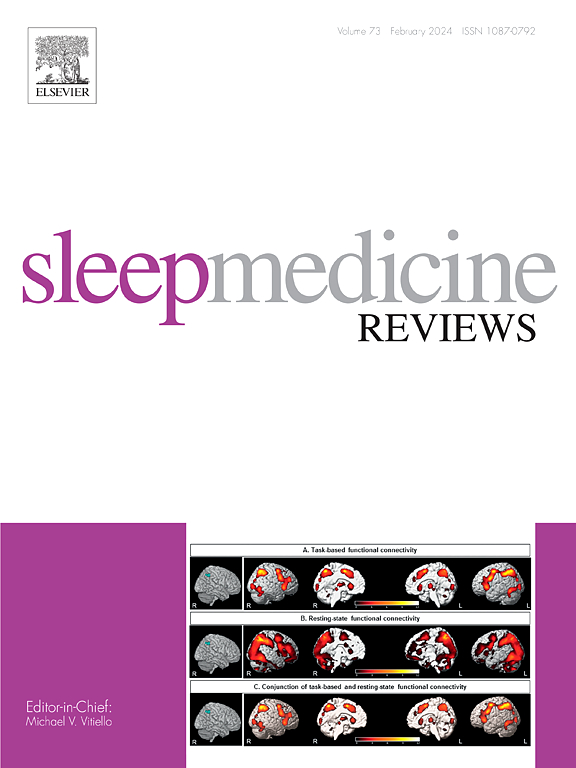The dentofacial and upper airway morphology of adults with obstructive sleep apnea: A systematic review and meta-analysis
IF 9.7
1区 医学
Q1 CLINICAL NEUROLOGY
引用次数: 0
Abstract
The purpose of this systematic review is to summarize evidence regarding the dentofacial and upper airway features of obstructive sleep apnea (OSA) with adults. This systematic review included 32 cross-sectional studies that compared characteristics ascertained from lateral cephalograms or cone beam computed tomography (CBCT) in adults with and without OSA. Comprehensive searches were conducted in PubMed, Embase, and Web of Science from inception to December 2024. Meta-analyses revealed that the inter-first premolar distance (MD = −2.01, P < 0.00001), sella nasion plane length (SN, MD = −2.08, P < 0.00001), posterior airway space (PAS, MD = −1.95, P = 0.03) were notably smaller in the OSA group compared to controls. Conversely, anterior total facial height (ATFH, MD = 2.66, P < 0.0001), the soft palate length (UL, MD = 5.41, P < 0.00001) and the angle constituted by subspinale, nasion and supramentale (ANB, MD = 0.64, P = 0.01) were significantly larger in the OSA group. In comparison to healthy individuals, it is evident that OSA patients may present with a constricted maxillary arch, underdeveloped and clockwise-rotated mandible, augmented vertical facial growth, an inferiorly positioned hyoid bone, and a diminished pharyngeal airway space.
成人阻塞性睡眠呼吸暂停患者的牙颌面和上气道形态:一项系统回顾和荟萃分析
本系统综述的目的是总结有关成人阻塞性睡眠呼吸暂停(OSA)的牙面和上呼吸道特征的证据。本系统综述包括32项横断面研究,比较了患有和不患有OSA的成人的侧位脑电图或锥形束计算机断层扫描(CBCT)所确定的特征。在PubMed, Embase和Web of Science中进行了从成立到2024年12月的全面搜索。meta分析显示,第一前磨牙间距离(MD = - 2.01, P <;0.00001),鞍面长度(SN, MD = - 2.08, P <;0.00001)、后气道间隙(PAS, MD = - 1.95, P = 0.03)明显小于对照组。相反,前路总面高(ATFH, MD = 2.66, P <;0.0001),软腭长度(UL, MD = 5.41, P <;0.00001),且由棘下、棘下、棘上构成的夹角(ANB, MD = 0.64, P = 0.01)在OSA组明显增大。与健康个体相比,OSA患者明显表现为上颌弓狭窄,下颌骨发育不全且顺时针旋转,面部垂直生长增强,舌骨位于下方,咽气道空间缩小。
本文章由计算机程序翻译,如有差异,请以英文原文为准。
求助全文
约1分钟内获得全文
求助全文
来源期刊

Sleep Medicine Reviews
医学-临床神经学
CiteScore
20.10
自引率
3.80%
发文量
107
期刊介绍:
Sleep Medicine Reviews offers global coverage of sleep disorders, exploring their origins, diagnosis, treatment, and implications for related conditions at both individual and public health levels.
Articles comprehensively review clinical information from peer-reviewed journals across various disciplines in sleep medicine, encompassing pulmonology, psychiatry, psychology, physiology, otolaryngology, pediatrics, geriatrics, cardiology, dentistry, nursing, neurology, and general medicine.
The journal features narrative reviews, systematic reviews, and editorials addressing areas of controversy, debate, and future research within the field.
 求助内容:
求助内容: 应助结果提醒方式:
应助结果提醒方式:


